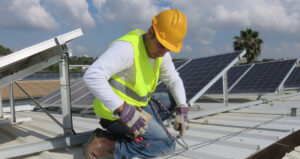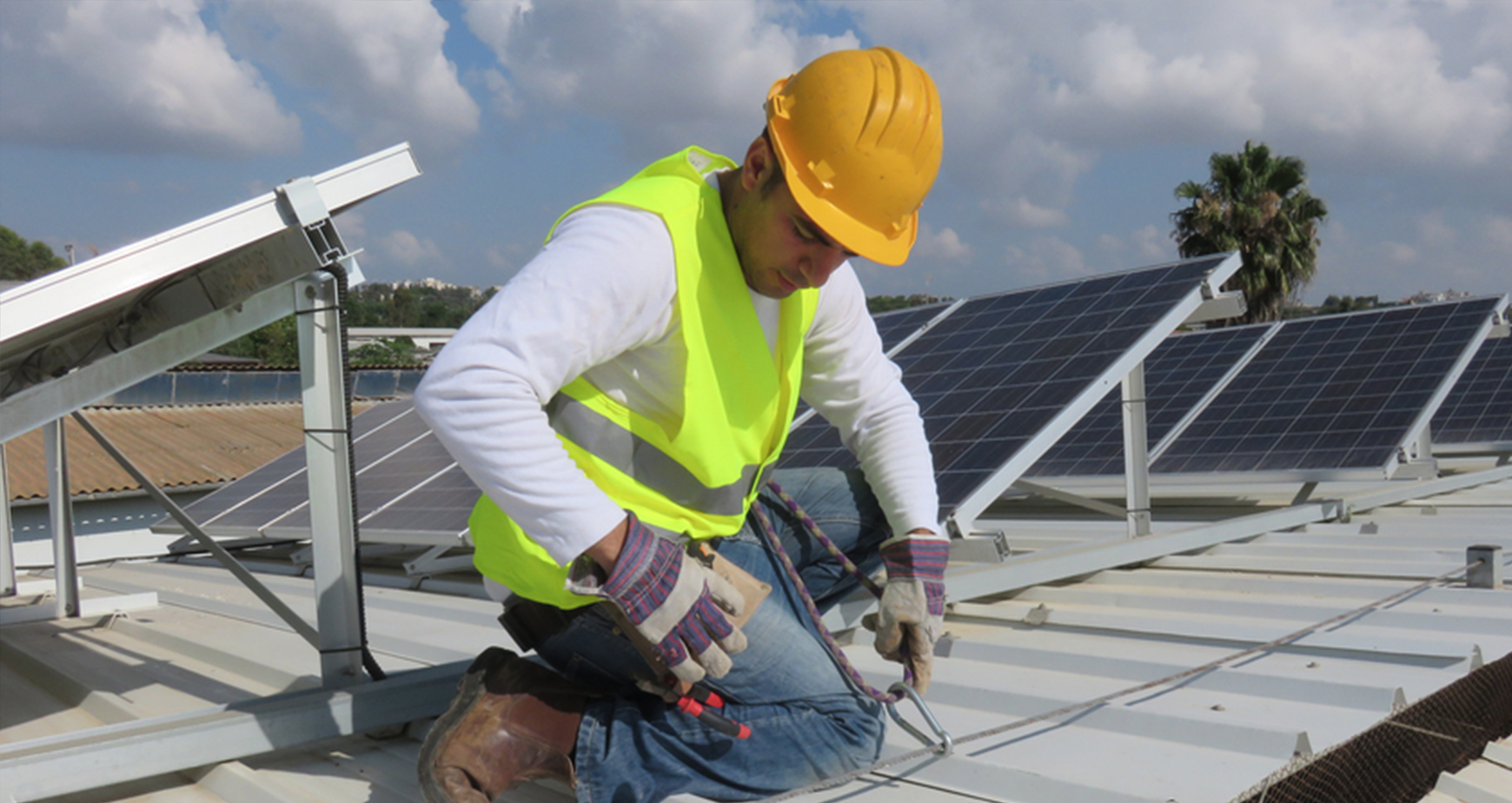A roof is a major investment in any building and needs to be properly maintained to maximize its lifespan. Small problems can become very costly if not addressed.

Debris should be removed regularly. Accumulation restricts drainage and accelerates membrane deterioration. Inspect all drains and scuppers for blockage. Caulking is vital to keep metal flashings in brick walls and chimneys watertight.
The flashing is a metal piece connecting two elements on your roof, like a chimney, skylight, or vent. It’s also the area most likely to leak if not properly sealed. If the flashing is not doing its job, you could have moisture in the attic, which can lead to mold, ruined drywall, or rotten wood. This is a problem that can easily be prevented by a little maintenance.
While you’re on the roof, look for signs of rust or corrosion on the flashing. If you see any, a quick touch up with roofing cement should fix them. Additionally, you should be on the lookout for any dents in the flashing. These can be caused by a number of factors, but the most common is simply that the flashing was not installed correctly to begin with.
Another issue to watch out for is raised screw or nail heads on the flashing. This is because wood naturally flexes as it heats and cools, so the nails or screws tend to wiggle loose over time. These should be re-tightened or replaced as needed.
Finally, be sure to check the condition of the flashing at changes in plane as well as at penetrations through the roof. Many times, leaks from wall sealant or windows are disguised as roof leaks, and these should be addressed before the damage gets worse.
You should also examine the soffit and fascia from the ground. This will give you a better idea of the overall condition of the roof overhang and gutters, which are both important components of the entire roof system. If the soffit and fascia are in good condition, they will be able to keep water away from the roof and slow down its deterioration.
Trim Tree Branches
Trimming tree branches and limbs is one of the most important steps in roof maintenance. This helps keep your home safe from falling debris during storms and makes it easier to clean out drains on the roof. It’s also a good way to keep trees healthy and prevent damage from overgrowth.
Start by identifying the branch that needs to be trimmed. If it’s hanging low, rubbing your house or threatening wires, it’s time to cut it down. You should only remove about 25 percent of a tree at one time. It’s easy to kill a tree by over pruning it.
Once you have the limb you’re going to cut in mind, find where it connects to the trunk. This is called the branch collar, and it’s harder to see on some trees than others. It’s a slightly swollen area of bark around the base of the branch where it sticks out from the trunk. It’s usually easier to spot on deciduous trees than conifers, since their trunks are wider.
You want to make a clean cut just outside of the branch collar, leaving no stub. This gives the wound a better chance of healing quickly without forming rot or disease. It’s also a good idea to avoid cutting into the collar at any point, as this can weaken it.
After making the first cut, move up the trunk to find a location an inch or two further out from the branch collar. You don’t want to cut too close, but you should be able to eyeball the spot where it will be a good distance away from the collar. This will give the stub enough room to break free on its own when it gets some of its own weight.
Remove Debris
Debris can damage a roof if left unattended, and a debris-free roof helps ensure that it performs as intended by directing water away from the home. If leaves, twigs, branches, and other debris are left on the roof surface, it can impede the drainage system by redirecting rainwater into areas where it shouldn’t go or by blocking gutters altogether. It can also puncture shingles or leave behind holes where insects or small pests can get in. In addition, it can block vents and create a barrier between the attic and the living space below, which can reduce efficiency.
It’s also important to remove any debris from the roof on a regular basis, especially after storms and windy conditions. A lot of debris is blown onto the roof from surrounding trees, and it can cause leaks and other problems if not removed.
Debris can also introduce trip and slip hazards on the roof. Things like tripped-over limbs, garbage can lids, tarps, and even discarded furniture can pose major safety risks for those who are working on the roof.
Removing debris from the roof can be a time-consuming task, and it’s usually best done by a professional. A qualified roofing expert will have access to tools that can make the job faster and easier, such as a leaf blower or a broom.
It’s best to do the removal on clear, sunny days when the debris isn’t too wet. In addition, it’s important to work with a partner and to use an extendable ladder when climbing on the roof to avoid falls. It’s also a good idea to have a spotter who can help you if necessary.
Clean the North Side
Using a hose, spray the entire north side of the roof, including gable ends and all chimneys, skylights and vent outlets. While cleaning, check for a soot-like substance called creosote that is often found on chimneys and should be removed with a chimney brush. This will reduce the risk of fire and prevent damage to the roofing system.
Algae grows on the north side of the roof because it gets less sun and stays damp longer than the rest of the roof. It feeds on the limestone filler in shingles and darkens them until it’s washed away. Airborne spores can carry the staining to other roofs and create an infestation. Cleaning the shingles with a bleach solution usually removes the algae, but it won’t keep them from coming back. Installing zinc control strips along the ridge of the roof can stop the growth by adding minute traces of metal that the algae spores can’t tolerate.
After cleaning, inspect the area for shingle damage and any exposed foam (if necessary, make repairs). Examine the drains, scupper and gutters to ensure that they are free of blockage and are functioning properly. Ice and snow can restrict drainage and accelerate the deterioration of the membrane. If a drain, scupper or gutter is blocked with ice or debris the resulting water buildup can cause structural overload.
A consistent maintenance program is the best way to avoid the expensive emergency repair bills that can occur as a result of leaks or other roof problems. It is three times more expensive to dispatch a repair crew for an urgent call versus responding to it during a maintenance visit. The savings in cost alone will more than pay for the maintenance service.
Inspect the Attic
Inspecting the attic is important to the overall health of the roof. It’s where the air infiltration takes place and it’s a good place to look for leaks. Moisture leaves many visible clues in the attic and a visual inspection is a very effective way to spot problems that need to be addressed. Inspectors will check for proper insulation and ventilation as well. They will also examine electrical wiring to make sure it’s up to code and properly secured. They may also examine the plumbing and HVAC (heating, ventilating and air conditioning) systems if they’re located in the attic.
Cooper advises home inspectors to inspect the attic on a rainy day, when it will be easier to spot active leaks. They should also wear appropriate personal protective equipment, such as safety glasses, a dust mask and a hard hat or cap to protect themselves from nails and beams. They should also carry a flashlight as attics are often poorly lit. Inspectors should also make sure the access point to the attic is adequate, ensuring it’s safe and easy to enter and exit. They should also clear any items that might block their assessment of the attic, such as debris from the soffit or gutters, and ensure that there are no potential hazards.
Home inspectors should also watch for signs of pest infestation in the attic, such as droppings or nests. They should also monitor the attic for chewed or gnawed insulation and wiring, which is an indicator of a serious problem. If these issues aren’t addressed, they can contribute to moisture intrusion and structural damage. In addition, these issues can also contribute to poor indoor air quality.
